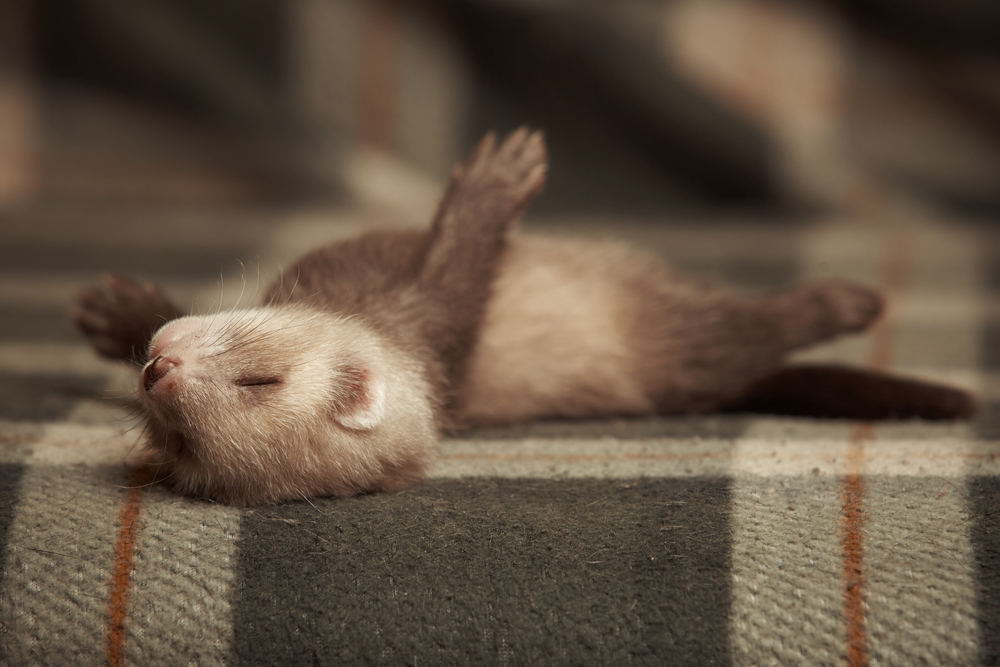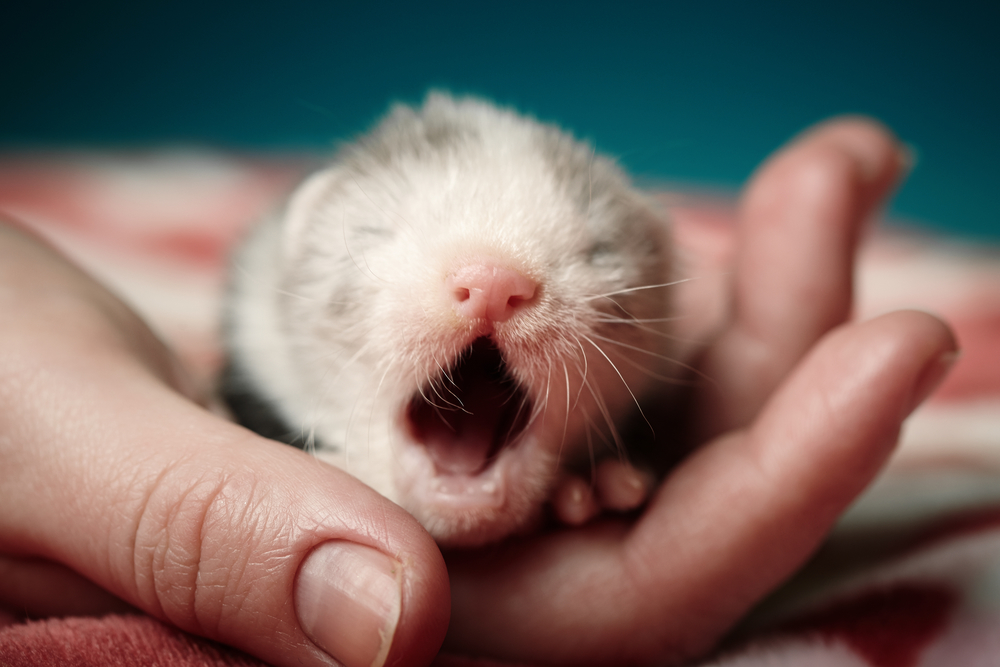Ferrets generally prefer to use one or two areas for relieving themselves. While this can make housebreaking considerably easier than with a dog or cat, it does require patience and persistence to fully litter train a ferret.
A ferret’s natural instinct is to back up into a corner in order to do its business. Many don’t like having to step or jump over the front edge of a traditional cat litter box. Cutting a regular litter box in half, thereby eliminating that edge, is a good way to encourage litter training. At first, try placing litter boxes in several different corners of a thoroughly ferret-proofed room. The ferret will soon pick out a favourite or two and the extra litters can gradually be removed from the room.
To train a ferret to use the litter box in its cage, try placing the tray in one corner, with food and toys occupying all other corners. Ferrets will not relieve themselves in the same place where they eat or play, so designating a single area of the cage for the litter tray can help.
Ferrets won’t use a litter box that is too clean or too dirty; they need to be able to smell their excrement. Cleaning out the litter twice a day and completely replacing the fill and scrubbing down the tray will ensure a good balance.
Keep in mind that any change in the ferret’s environment — a new mate, a new cage, a new brand of litter fill, or illness — can cause a previously litter-trained animal to have accidents. Observe the ferret closely to determine if there is an underlying cause to explain the change in manners.










